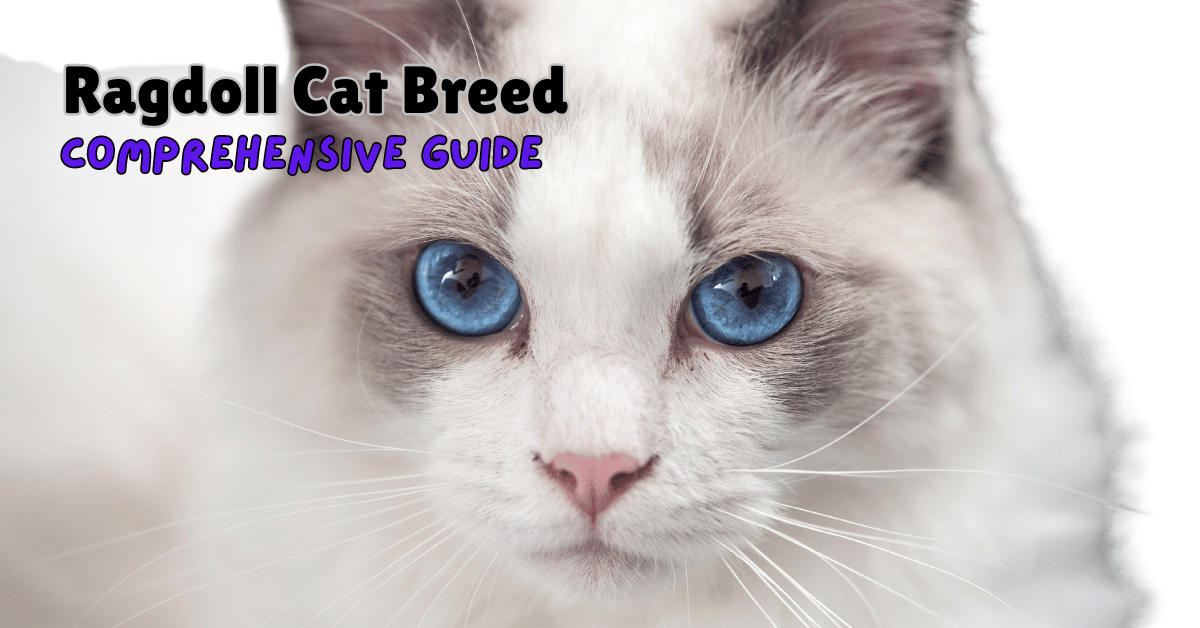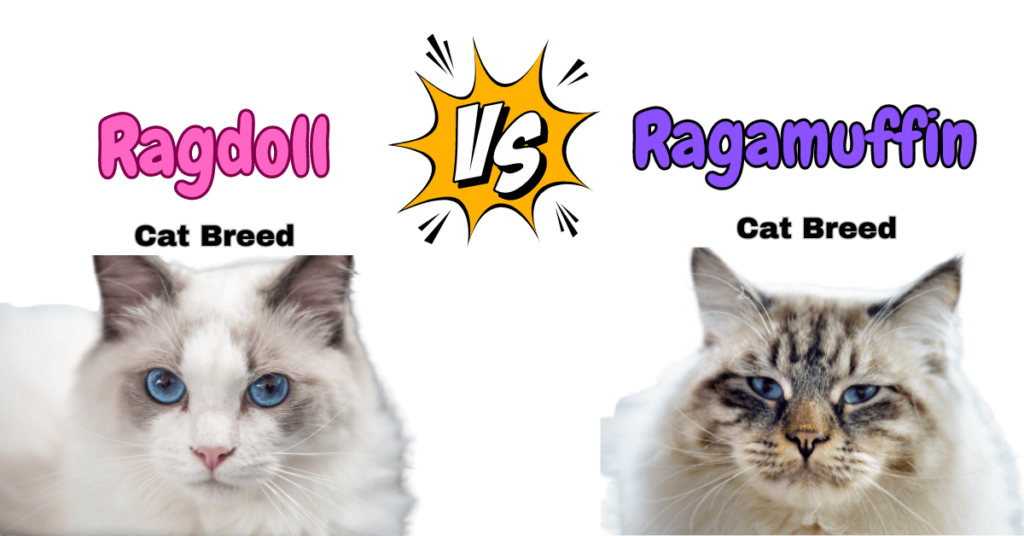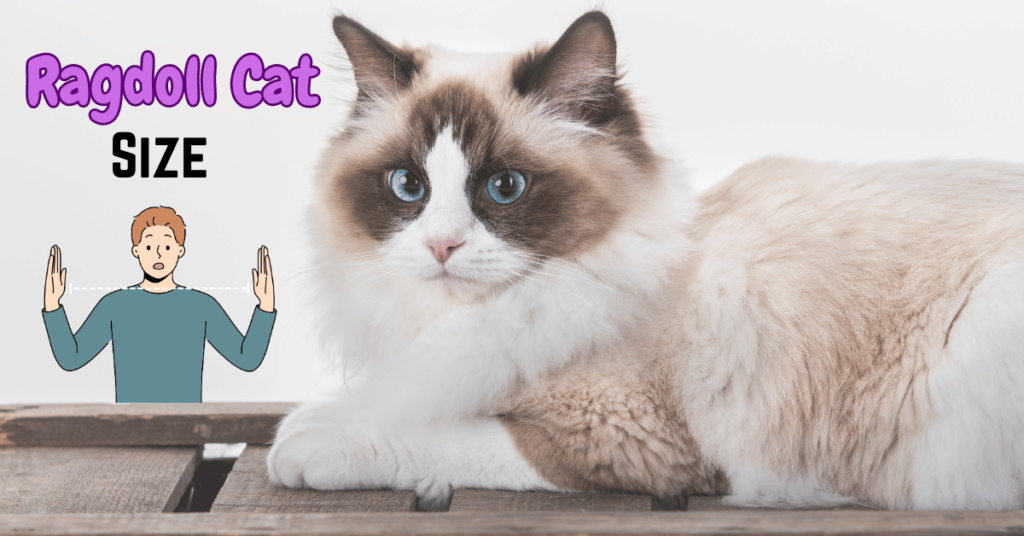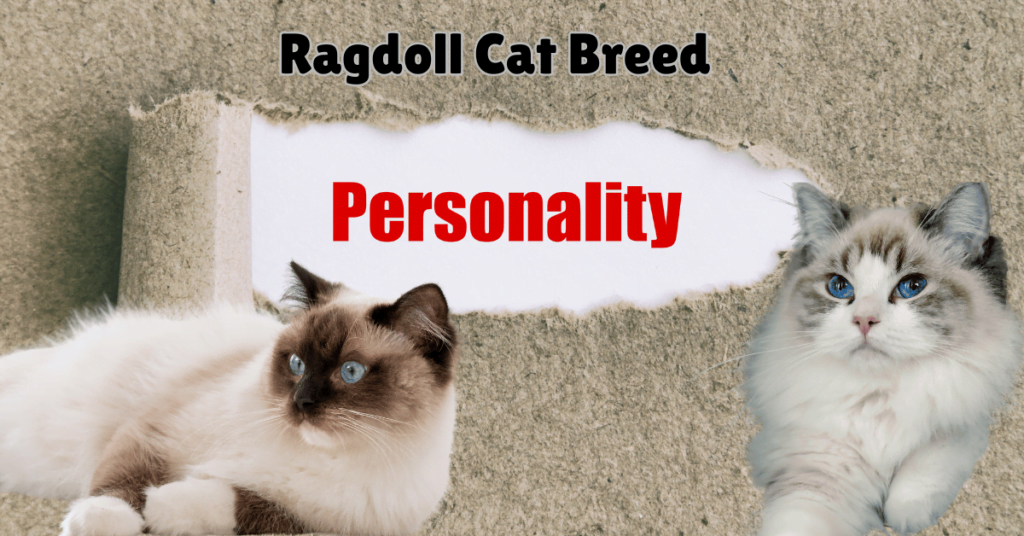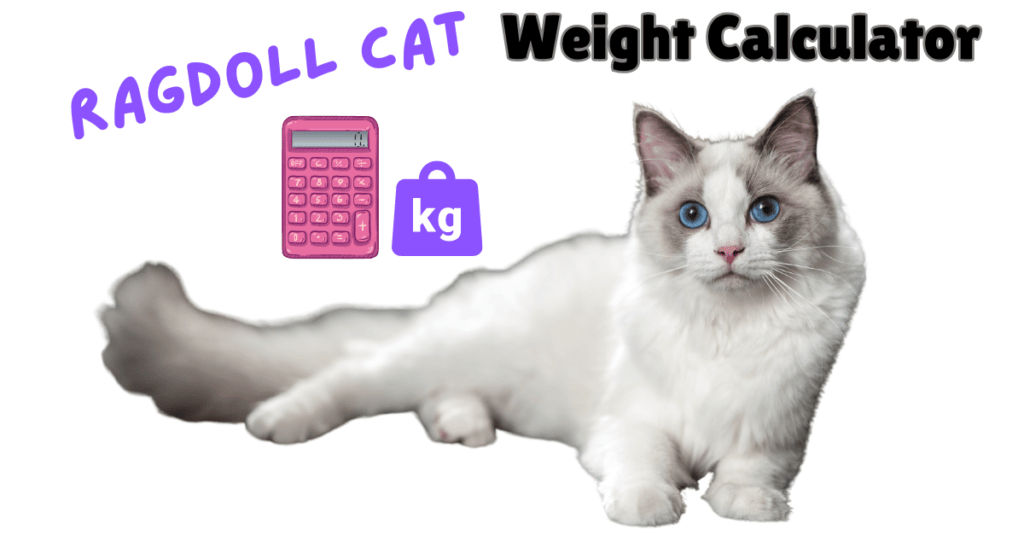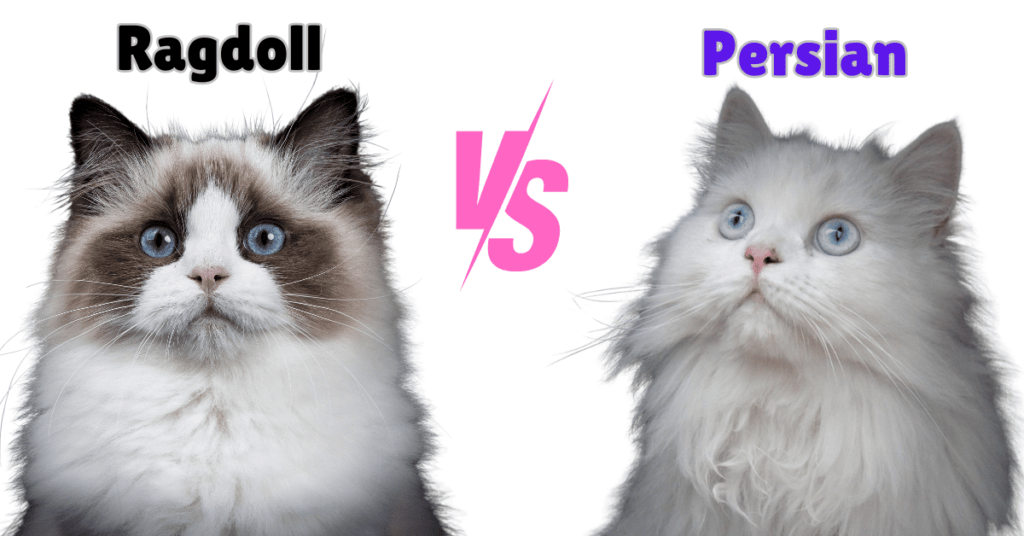This post contains affiliate links and I will be compensated if you make a purchase after clicking on my links.
Discover the Ragdoll Cat Breed: The Gentle Floppy Giants
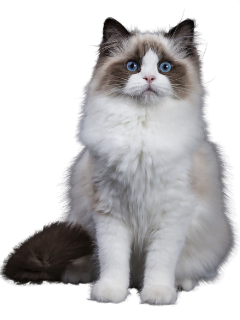
Have you ever wished for a cat that loves to cuddle and follows you around like a loyal pup? Meet the Ragdoll cat, the ultimate lap cat with a heart as soft as its plush fur.
Ragdolls, as one of the large cat breeds, are gentle giants who love nothing more than being in the company of their favorite humans. Unlike some cats who prefer their independence, Ragdolls thrive on interaction and companionship. They are known to go limp when picked up, hence the name “Ragdoll,” and will happily lounge in your arms or lap for hours on end.
If you’re looking for a cat that will greet you at the door and snuggle up with you on the couch, the Ragdoll is the perfect match.
The Origins of Ragdoll Cats
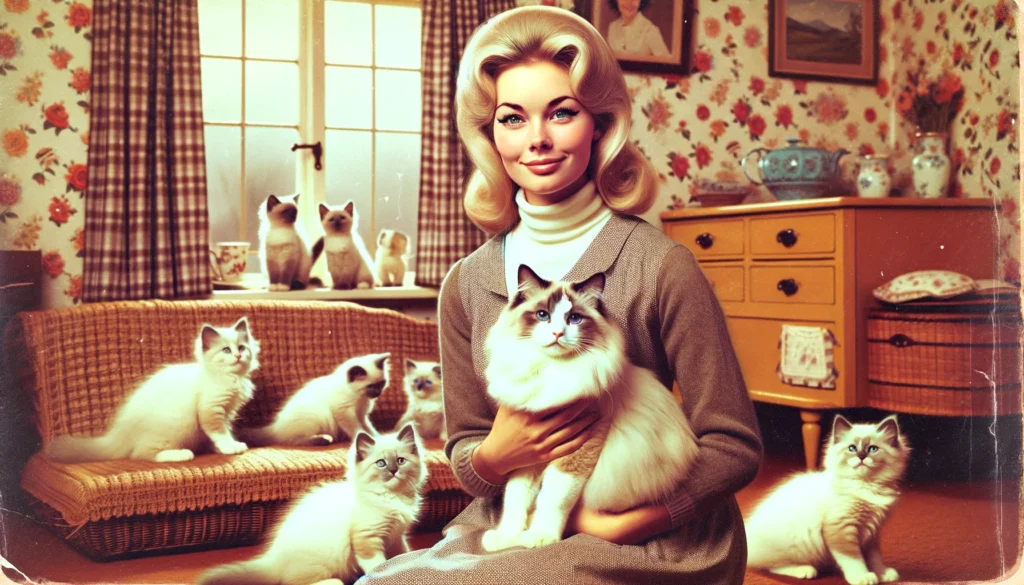
The Ragdoll cat breed was created in the 1963s by Ann Baker, a cat lover in Riverside, California. It all began with a domestic longhaired white cat named Josephine, known for her docile and affectionate nature. After Josephine’s car accident, her kittens exhibited unusually relaxed and gentle temperaments, which intrigued Baker.
Ann Baker started a selective breeding program, crossing Josephine’s offspring with other cats that shared similar traits. This process eventually developed the Ragdoll breed we know today, characterized by their large size, striking blue eyes, and silky fur.
Ann Baker also spun some interesting myths about the breed, claiming genetic experiments and human-like traits. While these stories are purely fictional, they add a touch of mystique to the Ragdoll’s origin. The Cat Fanciers Association (CFA) began registering Ragdolls in 1993, and they have consistently been one of the most popular breeds ever since.
Fun Fact: From the Ragdoll breed, another recognized breed has emerged: the Ragamuffin. Although similar, it is a separate breed.
Physical Characteristics
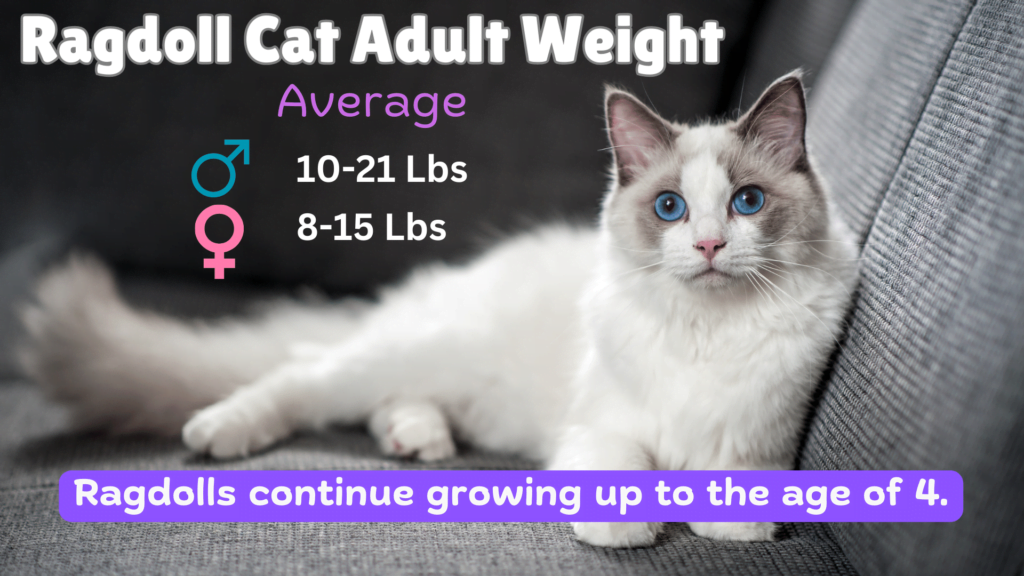
Ragdoll cats are renowned for their captivating appearance and affectionate nature. These medium to large-sized cats have a muscular build, with males typically weighing between 15 to 21 pounds and females ranging from 8 to 15 pounds. Despite their size, Ragdolls have a soft and fluffy appearance, thanks to their luxurious semi-longhaired coat.
Striking Blue Eyes
One of the most distinctive features of Ragdoll cats is their striking blue eyes, similar to those of the Siamese. These large, oval-shaped eyes are set wide apart, giving them an expressive and gentle look. The deep blue color ranges from a light, icy blue to a dark, sapphire hue, adding to their enchanting appearance.
Body Structure
Ragdolls have a well-proportioned body with a broad chest, sturdy legs, and a long, bushy tail. Their heads are moderately wedge-shaped with a flat top, and their ears are medium-sized with rounded tips, often adorned with tufts of fur.
Coat and Colors
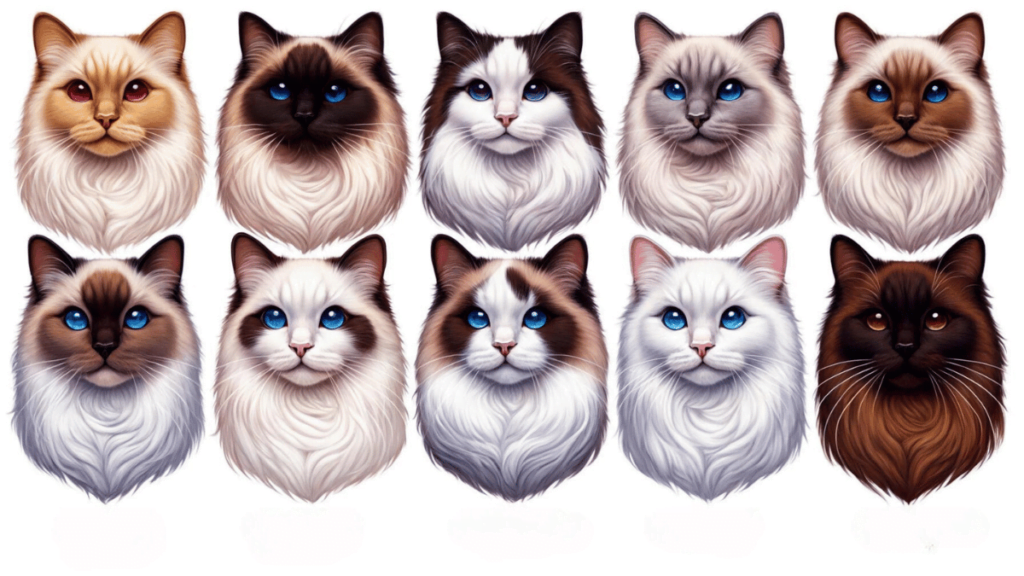
The Ragdoll’s coat is one of its most admired traits. Soft, silky, and plush, their fur feels like a cloud to the touch. Unlike some longhaired breeds, Ragdolls’ fur resists matting and requires relatively low maintenance.
Their coats come in a variety of colors and patterns, including seal, blue, chocolate, lilac, cream, and even black (although black Ragdolls can’t compete in breed-specific competitions). Common patterns include the following:
- Colorpoint: The classic Colorpoint Ragdoll boasts darker points on their ears, face, tail, and feet, standing out against a lighter body. Their chest, chin, and bib may be lighter, with nose and paw pads matching the point’s color.
- Mitted: Mitted Ragdolls have well-defined points on their legs, ears, mask, and tail, with adorable white “mittens” on their paws, and white markings on their chin and belly. Their nose leather matches the point color, while their body provides a contrasting backdrop.
- Bicolor: Bi-Color Ragdolls sport darker points on their ears, top of the head, and back, with a bright white blaze on their face. Their bodies are predominantly white with charming spots, while their chin, chest, and underside are snowy white.
- Van Pattern: Van-patterned Ragdolls have darker points on their ears, mask, and tail, creating a striking contrast against their white fur.
Key Differences
- Bi-Color: Has extensive white, especially on the face (blaze) and underside.
- Van: Primarily white with color limited to the ears, mask, and tail.
- Colorpoint: Classic pointed pattern with dark points and a contrasting lighter body.
- Mitted: Similar to Colorpoint but with white “mittens” on paws and white chin and belly markings.
Eye Color
All purebred Ragdoll cats have lovely blue eyes. However, if you notice different shades of green or yellow in their eyes, it might indicate that they’re not purebreds.
Maturation
Ragdolls mature slowly, reaching their full size and coat length at around three to four years old. This slow maturation allows their personalities and physical traits to develop fully, ensuring they become the loving and majestic companions they are known to be.
The Personality and Temperament of Ragdoll Cats
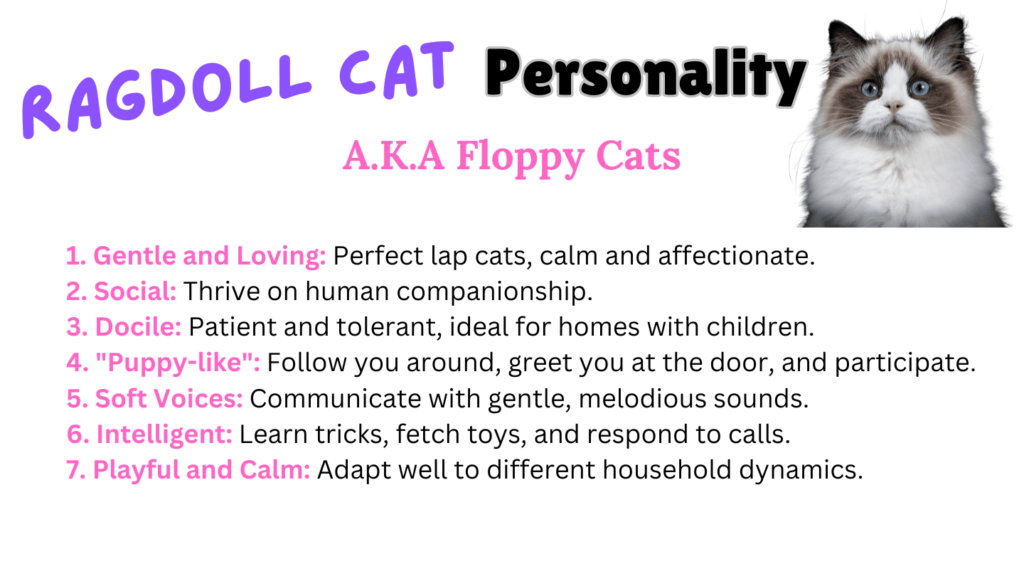
If Ragdoll cats had a motto, it would probably be, “Stay calm and cuddle on.” Similar in personality to Ragamuffins and American Bobtails, these affectionate felines are renowned for their gentle and loving nature, making them the quintessential lap cat. Ragdolls are social butterflies in the cat world, often seeking out human companionship and thriving in a family environment.
One of the standout traits of Ragdoll cats is their docile nature. They are incredibly patient and tolerant, making them excellent companions for families with children and other pets. You’ll often find them following their favorite humans from room to room, always ready to offer a warm cuddle or a gentle nudge for attention.
Unlike more independent cat breeds, Ragdolls are known for their “puppy-like” behavior. They enjoy being involved in household activities and will often greet you at the door, accompany you during chores, or snuggle up next to you while you relax. Their affectionate demeanor is complemented by their soft, melodious voices, which they use to communicate their needs and feelings.
Ragdolls are also highly intelligent and trainable. They can learn tricks, fetch toys, and even come when called, much like a dog. This makes them not only loving companions but also interactive and engaging pets.
Fun Fact: Ragdolls are known to go limp when you pick them up, which is a unique trait that adds to their charm. This relaxed, floppy behavior is endearing and makes them incredibly easy to handle.
Health and Lifespan of Ragdoll Cats
Ragdoll cats are generally healthy, robust felines, but like all breeds, they have specific health considerations. Understanding these can help ensure your Ragdoll leads a long, happy, and healthy life. Typically, Ragdolls have a lifespan of 12 to 17 years, though with proper care, some have been known to live even longer.
Common Health Issues
- Hypertrophic Cardiomyopathy (HCM): This condition causes the heart muscle to thicken. Regular veterinary check-ups and heart screenings can help detect this condition early and manage it effectively. Reputable breeders screen for HCM to reduce the risk of this genetic condition.
- Urinary Tract Issues: These can sometimes lead to infections or blockages. Providing a diet that supports urinary health and ensuring your cat stays well-hydrated can help mitigate these risks.
- Dental Care: Regular dental care is important for Ragdolls. Brushing their teeth and providing dental treats can help prevent periodontal disease, which is common in many cat breeds.
- Obesity: Due to their laid-back nature, Ragdolls are prone to obesity. Regular play and exercise are crucial to keeping them at a healthy weight.
- Polycystic Kidney Disease (PKD): Ragdolls are at risk of polycystic kidney disease (PKD) due to an abnormal gene. This condition causes multiple fluid-filled cysts to form on the kidneys, starting in kittenhood and growing as the cat matures. These cysts can impair kidney function over time.
Exercise Requirements for the Ragdoll Cat Breed
Despite their laid-back demeanor, Ragdoll cats need regular exercise to stay healthy and happy. Engaging your Ragdoll in daily play sessions for 30-60 minutes helps prevent obesity and keeps their muscles toned.
Suggested Activities For Ragdolls
- Interactive Toys: Feather wands, laser pointers, and ball toys can stimulate their natural hunting instincts and provide plenty of physical activity. Ragdolls enjoy interactive play and eagerly participate in games involving chasing or pouncing.
- Climbing Structures: Cat trees and scratching posts encourage your Ragdoll to exercise. These structures provide physical activity and satisfy their natural desire to climb and scratch.
- Outdoor Cat Space: A secure outdoor area can offer your Ragdoll space to climb and play. Encouragement may be needed to motivate them to use this space.
Pro Tip: Schedule regular, short play sessions throughout the day to keep your Ragdoll engaged and active without overwhelming them. This breed can be lazy if not encouraged, so spending time each day on interactive play is crucial to prevent weight issues.
Ideal Diet for Ragdoll Cats
To ensure optimal health, Ragdoll cats need a balanced diet rich in high-quality proteins, essential fats, and limited carbohydrates. Here’s a breakdown of what makes the perfect meal plan for your Ragdoll:
Key Components
- Proteins: Ragdoll cats thrive on a diet rich in animal proteins, making up over 50% of their meals. Proteins are crucial for muscle maintenance and overall health. Look for foods where meat, fish, or poultry is the primary ingredient.
- Fats: Essential fatty acids like omega-3 and omega-6 are vital for maintaining healthy skin, a glossy coat, and supporting cardiovascular health and joint mobility. Fats also provide energy and support cell function.
- Carbohydrates: Keep carbohydrates to a minimum—under 3%—to avoid digestive issues. Opt for complex carbs like sweet potatoes or peas, which provide energy without spiking blood sugar levels.
- Vitamins and Minerals: Ensure your Ragdoll gets essential vitamins and minerals, including Vitamin A, D, E, K, B vitamins, and minerals for electrolyte balance, organ function, and bone health. These nutrients are crucial for overall well-being.
Feeding Frequency
For adult Ragdoll cats a regular feeding schedule of two meals a day, typically in the morning and evening, is advised. This routine helps regulate metabolism, prevent overeating, and support consistent energy levels and digestive health.
Hydration
Adequate hydration is key to preventing dehydration-related conditions. Ragdolls should consume 0.75-1 ounce (22-30 ml) of water per pound of body weight daily. Incorporating wet food into their diet can help increase their water intake.
Pro Tip: Keep your Ragdoll’s water bowl fresh and clean, and consider investing in a cat water fountain to encourage regular hydration.
Grooming Needs of Ragdoll Cats
Ragdoll cats have beautiful, semi-longhaired coats that require regular grooming to keep them looking their best. Here’s a streamlined guide to their grooming essentials:
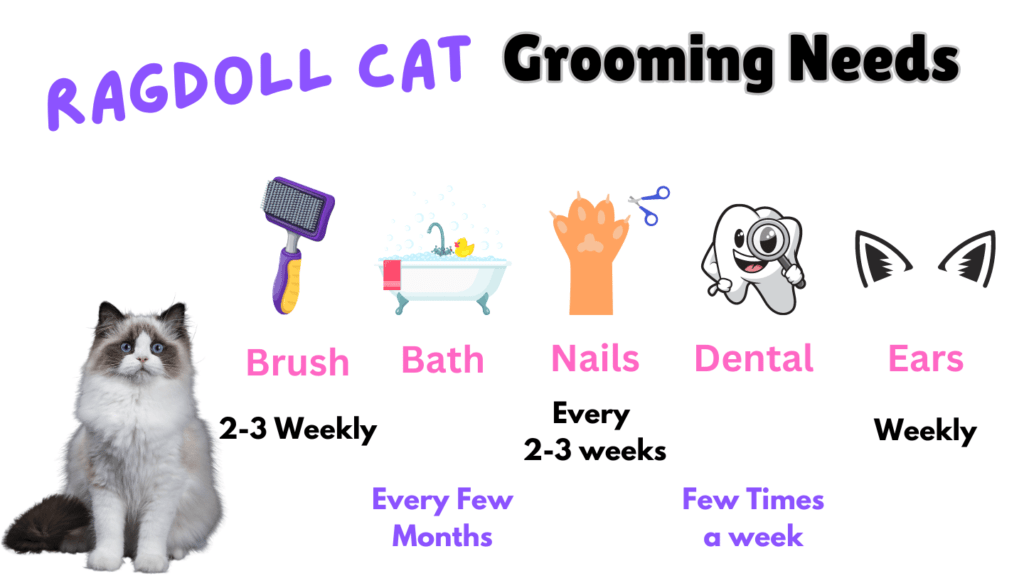
Coat Care
Ragdolls’ coats need regular attention to stay silky and free of mats. Brush your Ragdoll’s coat with a steel comb or a slicker brush to gently remove tangles and loose hair. Regular brushing helps maintain their coat’s texture and prevents hairballs.
Frequency: Brush their coat at least two to three times a week.
Bathing
While Ragdolls don’t require frequent baths, occasional bathing helps keep their fur clean and free of oils. Use a cat-specific shampoo to ensure their skin remains healthy and their coat stays shiny.
Frequency: Bathe your Ragdoll every few months or as needed.
Nail Trimming
Regular nail trimming is crucial for preventing overgrowth, which can lead to discomfort and accidental scratches. Use a proper cat nail trimmer to keep their nails at an appropriate length. When trimming your Ragdoll’s nails, be sure to trim only the sharp tip. Avoid cutting too close to the quick to prevent discomfort and bleeding.
Frequency: Trim their nails every two to three weeks.
Dental Care
Dental health is important for Ragdolls. Brush their teeth regularly with a cat-specific toothpaste to prevent tartar buildup and maintain good oral hygiene. Providing dental treats and toys can also help keep their teeth clean.
Frequency: Brush their teeth a few times a week.
Ear Care
Check your Ragdoll’s ears for signs of dirt, wax buildup, or infection. Use a gentle, cat-safe ear cleaner to keep their ears clean and healthy.
Frequency: Check and clean their ears weekly.
Pro Tip: Use grooming sessions as an opportunity to bond with your Ragdoll. Gentle grooming not only keeps them looking their best but also strengthens your relationship and provides them with comfort and security. Start grooming your Ragdoll from kittenhood to get them accustomed to the routine.
Celebrating the Ragdoll Cat Breed
Ragdoll cats are truly special, combining beauty, grace, and an affectionate nature that makes them beloved by their owners. Their calm demeanor and gentle disposition make them ideal companions for families, singles, and seniors alike.
Their loving nature, coupled with their stunning appearance, makes them one of the most cherished cat breeds in the world.
Share your home with a Ragdoll and you’ll quickly understand why they are so beloved. Their gentle, loving presence is sure to bring warmth and happiness to your life.
Meet Sean, a fintech whiz with a penchant for pet purrs and blockchain buzz. After a decade of fintech feats, Sean’s tech talents leaped from ledger lines to litter lines, driven by a passion for pets and a vision for a more connected pet care community. With three critter companions as co-pilots, Sean launched this blog to share a treasury of pet-friendly tech tips and tales.

